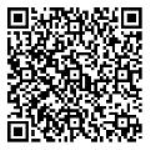The Connection of Divergent Thinking and Convergent Thinking: Developing of Constrained Divergent Thinking Test and Examining Reliability and Validity
Author: Hsueh-Chin Chen(Department of Education Psychologyand Counseling,National Taiwan Normal University),Su-Pin Hung(Department of Education Psychologyand Counseling,National Taiwan Normal University),Yi-Fang Hsu(Department of Education Psychologyand Counseling,National Taiwan Normal University),Haw-Jeng Chiou(Department of Business Administration,National Central University),Ping-Yin Kuan(Department of Sociology, National Chengchi University),Chih-Yu Chan(Department of Education, National Chengchi University)
Vol.&No.:Vol. 54, No. 4
Date:December 2009
Pages:29-61
DOI:10.3966/2073753X2009125404002
Abstract:
The purpose of this study was to develop a measure of creative cognition which would enable educators to more accurately and objectively measure the development of creativity in Taiwanese high school students. The instrument was designed to measure the constructs of divergent-thinking and insight, as previous research has suggested that these are the only two dimensions of creativity which can be measured objectively. To overcome problems encountered in previous attempts to measure these two abilities, and to combine the strengths of separate measures of both, a test was developed which involves having students subtract strokes from the Chinese characters “里” to form another legal Chinese character. Responses are scored for fluency (the number of legal responses), flexibility (the variety of perspectives represented in the responses), and originality (statistical infrequency). The stroke-subtraction test offers advantages compared to other measures of creativity in that it emphasizes the novelty and appropriateness of the responses simultaneously. Further, use of the three score indexes simplifies the scoring process. The test was piloted with 1,200 Taiwanese high school students, and this sample was used to establish a norm for the purpose of norm-referenced score interpretations. The results were also compared with those from several other measurements to provide evidence supporting the criterion-related validity of the instrument. Based on the findings, implications for educational administrators, schools, teachers are discussed. Finally, suggestions for future research are offered.
Keywords:cognitive measure of creativity, insight, insight problems, divergent thinking
 《Full Text》
《Full Text》

| APA Format | Chen, S.-C., Hung, S.-P., Hsu, Y.-F., Chiou, H.-J., Kuan, P.-Y., & Chan, C.-Y. (2009). The Connection of Divergent Thinking and Convergent Thinking: Developing of Constrained Divergent Thinking Test and Examining Reliability and Validity. Journal of Research in Education Sciences, 54(4), 29-61. doi:10.3966/2073753X2009125404002 |
|---|